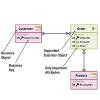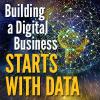Business Transformation Requires Transformational Leaders
Leadership and teaming skills are front and center in times of rapid change. Meet today’s constant disruption head on with expert guidance in leadership, business strategy, transformation, and innovation. Whether the disruption du jour is a digitally-driven upending of traditional business models, the pandemic-driven end to business as usual, or the change-driven challenge of staffing that meets your transformation plans — you’ll be prepared with cutting edge techniques and expert knowledge that enable strategic leadership.
Subscribe to Arthur D. Little's Culture & Leadership Newsletter
Insight
Pat O’Sullivan starts from the premise that the principles of standardization and conformity that were developed for the data warehouse are equally applicable to a digital business to deliver a consistent view of information to many lines of business. He explores the characteristics of a system of common metadata that can define the links between an existing data warehouse and an emerging digital business, describing the components and characteristics of this new metadata layer and how it is essential to fueling the growth of the AI capabilities of a digital business.
It’s All About That Data
Michael Müller believes that managing change is essential for a digital business initiative. This position emerges from his experience with BI projects where “Babylonian confusion” reigns, as business and IT lack a common vocabulary and an ability to communicate clearly about data needs and structures. Müller posits that digital business shares these same characteristics, but at a much larger scale because of the nature of big data.
Martijn ten Napel explores the challenge that has confronted him throughout his career: why do so many BI projects fail? His conclusion is that the struggle to achieve coherence between people, process, information, and technology has caused the complexity of the data landscape to grow out of control. His answer to the problem is the connected architecture — a framework and thought process for the organization of DW and BI projects. He believes it applies equally to digital business.
Adapting to the changing business environment of a digital business is about much more than implementing new technologies like analytics, the IoT, and so on. Rather, business managers from the boardroom down must drive the adoption and skilled use of data-based decision making. Ultimately, middle managers are critical to digital business — making data-based decisions and selecting tasks that provide the necessary capabilities to deliver on a digital transformation vision and strategy.
Starting from a data warehouse just makes sense. Of course, the architectural thinking and technology offer valuable intellectual capital to IT. But the real value comes from the decades of experience in information/data governance and management, as well as the interpersonal and organizational skills that DW implementers have gathered. As you will see from the articles in this issue, the contributors are on the same path.
In this, the final Advisor in a four-part series, we explore the third lens of organizational behavior — capability: We “have the ability” to do it. We also examine the importance of language and its impact on culture in the digital transformation transformation.
Compared to software, industrial delivery takes longer, is more complex, and requires a broader set of skills. This series on industrial Agile opens with an overview of a framework for industrial agility, and considers these questions:
-
What is new in industry when Agile principles are applied?
-
How do the different frameworks of Lean, Agile, Scrum, and Six Sigma fit together?
In this Advisor, the authors explore how two fundamentally different paradigms — Agile architecture and architectural agility — can reinforce one another. Based on a real-world case study from a US technology company, the authors describe how one organization has combined architecture with Agile thinking and methods to break through the anti-patterns and improve its results.























